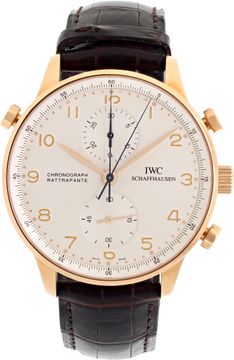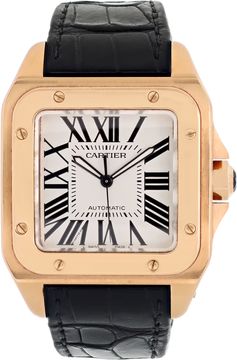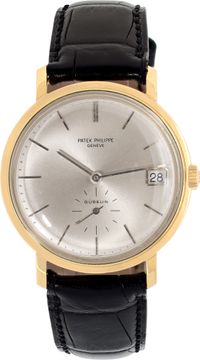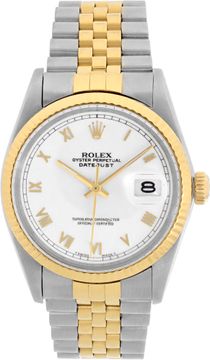The History and Evolution of the Rolex GMT-Master II

Following our recent investigation into the development and progression of the GMT-Master, it would only be appropriate that we study the next chapter of Rolex’s famed pilot’s watch, the GMT-Master II. Particularly relevant since Rolex released a new generation just this year, join us as we go deep into the history and evolution of the Rolex GMT-Master II.
But First, What’s the Difference between the GMT-Master and the GMT-Master II?
At first glance, the GMT-Master and the GMT Master II may look like the same watch, but the movements inside the cases make a big difference. Essentially the GMT-Master can indicate two time zones since the local hour hand and the GMT-hand move together around the dial. Therefore, on a GMT-Master watch, the second time zone is set by rotating the 24-hour marked bezel so that the correct hour in the second time zone lines up with the GMT-hand on the dial.
Conversely, the GMT-Master II can indicate three time zones because the main local hour hand and the extra 24-hour hand are set independently from each other. As a result, the bezel can remain in Position 0 (where “12” on the bezel aligns with 12 o’clock on the dial) and the GMT-hand can move freely to point to any other hour on the bezel to indicate the second time zone.

For example, let’s say that I am in Los Angeles and the center Mercedes-style hands indicate that it’s 11:20 (in the morning). Then, let’s imagine that I want to keep tabs on New York time; so I set the arrow-tipped GMT-hand to point to 14 on the bezel to indicate that it’s 2:20 in the afternoon on the opposite coast. Then, let’s pretend that I’m curious to know the time in London. Since I know that London is five hours ahead of New York, I simply have to click the bezel forward (aka clockwise) five numerals and now the GMT-hand is pointing to 19, thus telling me that it’s 7:20 in the evening in Big Ben’s city.
Now that we know the difference between the GMT-Master and the GMT-Master II, let’s explore the four generations of the Rolex GMT-Master II model.
Rolex GMT-Master II 16760
Rolex unveiled the GMT-Master II in 1983 and with its introduction came plenty of “firsts” for the pilot watch collection. Interestingly, during this era, Rolex manufactured the GMT-Master and the GMT-Master II alongside each other, with the former being a less expensive alternative than the latter.
The Rolex GMT-Master II ref. 16760 was the maiden reference of the collection and as we previously mentioned, it was the first to offer a way to read three separate time zones. It was also the model that debuted the now-famous red and black “Coke” bezel. As a matter fact, unlike other references, the GMT-Master II ref. 16760 was offered in one variation only–steel construction, black and red bezel, and Oyster bracelet.

While the GMT-Master II ref. 16760 had the same 40 mm case size as the preceding GMT-Master models, it did have a noticeably thicker case to accommodate the thicker Caliber 3085 movement inside the case. The thickness is why the GMT-Master II ref. 16760 is often referred to as the Rolex “Fat Lady.”
The GMT-Master II ref. 16760 was also the first Rolex GMT watch to be fitted with a sapphire crystal, of course, equipped with a Cyclops magnification lens placed above the date window. Finally, it was also the first GMT to include white gold surrounds around the tritium luminescent hour markers on the on the black dial.
After just five years, Rolex stopped producing the 16760 in 1988 to make way for the GMT-Master II ref. 16710.
Rolex GMT-Master II 16710
Following the first GMT-Master II, Rolex launched the ref. 16710 in 1989. For the second iteration of the GMT-Master II, Rolex offered a robust collection of different metal variations and bezel options. Along with the steel GMT-Master II ref. 16710, there was also the two-tone yellow gold and steel GMT-Master II ref. 16713 and the full yellow gold GMT-Master II ref. 16718.

Bezel colors for the steel version included the iconic red and blue “Pepsi,” the red and black “Coke.” and a monochromatic black bezel. On the other hand, the two-tone GMT-Master II ref. 16713 came with either a brown “Root Beer” bezel or a black one, while the yellow gold GMT-Master II ref. 16718 sported a black bezel. What’s more, the Jubilee bracelet again became an option alongside the Oyster bracelet.
In terms of proportions, the 1671x family had a slimmer case size than its predecessor since Rolex used a slimmer Caliber 3185 (followed by Caliber 3186) movement. Due to its production period (1989 – 2007), the luminescence used on the dials of the GMT-Master II 1671x collection evolved over the years. You can find examples with tritium, Luminova, and finally SuperLuminova.
The GMT-Master II 16710 is often regarded as the last classic Rolex GMT watch because, as you’ll see, the next generation brought about a slew of changes to the collection.
Rolex GMT-Master II 116710
To mark the 50th anniversary of the GMT-Master, Rolex presented the yellow gold GMT-Master II ref. 116718 in 2005. This novelty set the design tone for the modern GMT-Master II watches. It was the first Rolex watch to include a Cerachrom ceramic bezel, thereby replacing the aluminum bezels of the past. Ceramic as a material has been super popular among luxury watchmakers recently since as a material, it offers a fantastic combination of great looks, hardness, and resistance to both scratching and fading. Rolex, for example, has rolled out the Cerachrom ceramic bezel to almost all their Professional watch collections–and it started with the GMT-Master ref. 11671x family.

In addition to the new bezel, Rolex refreshed the case shape (although remaining at 40 mm) to have a broader style, often referred to as the “Super Case.” There was also the addition of the Triplock winding crown, replacing the Twinlock–but water resistance remains at 100 meters. Plus, the new “Maxi Dial” houses larger indexes and hands and the rehaut (the space between the crystal and the dial) is now engraved with ROLEX ROLEX ROLEX as a counterfeit prevention tactic.
The 11671x family of GMT-Master II watches is the most varied to date. There’s the stainless steel GMT-Master II ref. 116710 with a choice of a black bezel (LN) or blue and black bezel (BLNR). There’s the yellow gold GMT-Master II ref. 116718 with a black bezel but with the option of a green dial (anniversary) or black dial. There’s the two-tone GMT-Master II ref. 116713 with a black dial and black bezel. And there’s the white gold GMT-Master II ref. 116719 with a blue and red “Pepsi” bezel. All models are exclusively offered on an Oyster bracelet.

There are also a host of special gem-set GMT-Master II watches within this collection with plenty of diamonds, sapphires, and rubies embellishments.
Just this year, Rolex introduced a new-gen GMT-Master II collection with three new models. As a result, we won’t be surprised if the 11671x family of watches will slowly disappear from the Rolex catalog to make room for new models.
Rolex GMT-Master II 126710
At Baselworld 2018, Rolex captured major attention with the release of a trio of new GMT-Master II watches making up the 12671x family.
The GMT-Master II ref. 126710 is the first stainless steel GMT to come with a ceramic red and blue “Pepsi” bezel, which was great news for those who could not afford the white gold “Pepsi” model. Furthermore, this model sees the return of the Jubilee bracelet to the GMT lineup.

Along with the steel model, Rolex also unleashed for the first time Everose gold versions of the GMT-Master II. There’s the two-tone steel and rose gold GMT-Master II ref. 126711CHNR and the full rose gold GMT-Master II ref. 126715CHNR. Both these models come with a brown and black ceramic bezel, a black dial and an Oyster bracelet.
Beneath the cases of the new GMT-Master II watches sits the new Caliber 3285 with an increased power reserve of 72 hours compared to the previous 48 hours.
Rolex will no doubt continue to round out this new lineup of GMT-Master II watches over the next few years and we can’t wait to see what they have up their sleeves.

The GMT-Master II has been around for 35 years now (Rolex no longer makes the GMT-Master I) and it is by far the most famous GMT watch in the world. If there’s one thing we know for sure, Rolex has a knack for making watches that so many want to own and wear and that is why they continue to dominate the luxury watch landscape.
What is the Most Expensive Rolex Watch Ever
NEXT ARTICLE
Celebrate 2019 Color of the Year with this Cartier Jewelry Set






